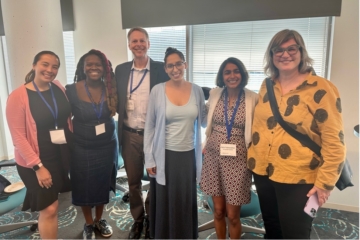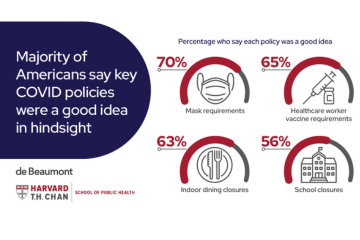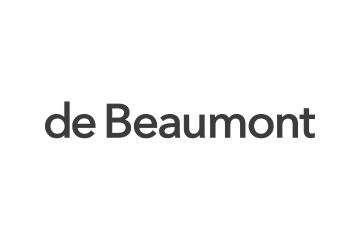By Mark R. Miller, William D. Snook, and Elizabeth Walsh
“If we are really about public health, we have to go where the people are, and they are in the communities on their phones.”
– Rex Archer, MD, MPH, Director of Health, City of Kansas City, Missouri Health Department

Many local public health departments are finding success in leveraging social media, particularly Twitter, to engage with audiences that may otherwise be difficult to reach. One agency that has intentionally incorporated social media into its culture is the City of Kansas City, Missouri, Health Department. “Engaging with our community is top priority, and social media is an essential tool for that,” said Michelle Pekarsky, the department’s public information officer. “There are many conversations on social media in which public health should, and even has a responsibility to, participate. Using video, images, humor, and messaging, we join the conversation and give public health a louder voice.”
Health departments use social media to share health messaging, combat misinformation, engage with community members, and advocate to improve community health. Success factors for many of these efforts include tailored messaging for specific audiences, meaningful engagement (not just one-way communications), strategic use of influential messengers, employee engagement, and defined goals and metrics.
Beyond traditional health education, social media provides an opportunity to make public health relevant, accessible, and even fun. One strategy the Kansas City Health Department has used is leveraging pop culture news, such as Forbes naming Kylie Jenner the youngest self-made billionaire and the unexpected death of Luke Perry from a massive stroke, to talk about health and social justice issues with an otherwise unengaged audience.
Beyond traditional health education, social media provides an opportunity to make public health relevant, accessible, and even fun.
For agencies that want to get started or expand their use of social media, the National Association of County and City Health Officials (NACCHO) has created a useful guide, the Social Media Toolkit: A Primer for Local Health Department PIOs and Communications Professionals. “Compared with just a few years ago, we’re seeing more agencies integrating social media into their strategic outreach,” said Andrea Grenadier, a marketing and communications specialist at NACCHO who helped produce the toolkit. “While some health departments may be missing opportunities to educate the public and engage with audiences, we are seeing more public health departments coming online, even though they may not have dedicated staff to manage social media, and their efforts are just beginning.”
Concerns About Social Media Use
Allowing and encouraging social media use is a powerful way to engage employees as ambassadors for your mission. But some organizations, including many state and local government agencies, have been reluctant to embrace social media beyond accounts managed by communications staff with a rigid review process. Some of the reasons health departments have been conservative in their use of social media are concerns about the following:
- Lost productivity, because employees will waste time.
- Security risks, often expressed by information technology (IT) staff.
- Privacy concerns, often from legal teams.
- Negative public response to a post by the organization or an employee.
While some departments still grapple with the concerns of social media, in 2019, not using social media is not an option. Here’s why:
- People are having conversations online about public health issues every day, and social media is an easy, effective way to engage in those conversations.
- People are talking about your agency and its work whether you like it or not. Social media allows you to know and understand what people are saying.
- Social media has become the go-to source for information; public health should be engaged to ensure the correct information is being shared and to counter misinformation with facts.
Potential Benefits of Social Media Use by Employees
Organizations that allow employees to support their agencies with social media can see the following benefits, among others:
- Attract and retain staff. More than 90% of organizations use social media channels for recruiting—making them more common than job boards, advertising, employee referrals, recruiting agencies, and events. Through their use of social media, your employees can extend the reach of your human resources department in attracting talented professionals. Millennials have grown up using social media, and they understand how it can be applied to support your agency’s mission. Banning social media will reduce their potential impact and may make your workplace less appealing for current and potential employees.
- Encourage professional development and connections. Some people think of LinkedIn as a tool for finding a new job, but it is much more than that. Professionally, people use LinkedIn to form strategic relationships, connect with partners, and share ideas. Twitter has communities that host substantive discussions and foster relationships locally, nationally, and internationally.
- Expand the reach and impact of your external communications. Through social media, all employees (not just communications staff) can share your reports, data, and health advisories. In addition to communicating health news, they can play an important and influential role in dispelling misinformation.
- Reach targeted audiences more effectively. Twitter and other social media tools also allow for communications that are more targeted than traditional media list TV, radio, and newspapers. Using advanced search functions, public health officials can detect regions where people are talking about a topic, like the influenza, and respond accordingly. Employees can amplify your messaging in their own words and to their own networks, which can be more influential than an “official” account. And social media is a cost-effective way to test the effectiveness of your messaging.
- Establish the expertise of your agency and employees. Journal authors can use social media to help bridge the gap between research and practice, add evidence-based research to combat misinformation, stay informed about breaking public health communications, and connect with a much wider audience than most print journals will reach. See “5 Reasons Journal Authors Should Embrace Social Media” from JPHMP Direct.
How to Build a Supportive Environment
To address concerns about productivity, security, and privacy, agencies can take the following steps:
- Demonstrate support from the top. For Kansas City’s health department, social media is a critical part of its communications and operations, which has been possible because of the strong support of its director and leadership team. The question for health managers should not be whether the agency should use social media but how to constantly feed the communication channels.
- Develop a clear policy regarding social media use. Let employees know what is allowed, what is not, and the consequences for breaking the rules. Development of a policy should involve all relevant perspectives—communications, legal, IT, human resources, and others.
- Offer training. If you want employees to promote your mission responsibly, provide training about acceptable ways to use social media. This should include both the do’s and the don’ts—the opportunities and also the potential risks.
- Monitor social media use. Monitoring is not just the job of the IT department. All managers should talk to their employees about the appropriate use of social media for their particular department or function and should keep track of what employees share.
- Keep your technology up to date. Just as agencies invest in technology to protect them from e-mail viruses and Web attacks, they need to ensure that their employees can safely use social media on agency computers, phones, and other devices.
Social media is not a strategy itself, but it can be a valuable component of an agency’s outreach efforts. Used strategically, it can help agencies advance their mission, improve communications, and engage meaningfully with their communities.
Mark Miller is the vice president of communications at the de Beaumont Foundation. William D. Snook is the senior information and policy officer and Elizabeth Walsh is a public health statistician at the City of Kansas City, MO Health Department.
This column first appeared with the title “Social Media in Public Health Departments: A Vital Component of Community Engagement” in the January/February 2020 issue of the Journal of Public Health Management & Practice. See the final authenticated version.




